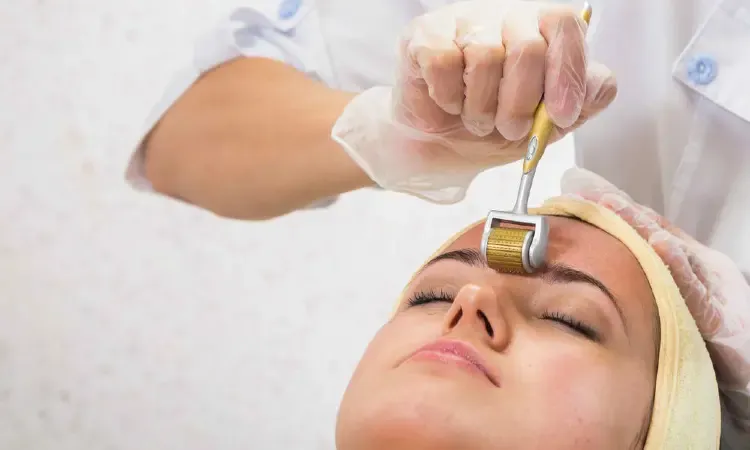Do you dread the thought of microneedling because of the pain? Are you tired of wincing and gritting your teeth through each session? Well, fear not! In this blog post, we’ll share with you some tips and tricks to make microneedling less painful so that you can enjoy all its benefits without any discomfort. From numbing creams to proper technique, we’ve got everything covered. So sit back, relax, and get ready to say goodbye to painful microneedling forever!
What is Microneedling?
Microneedling is a cosmetic procedure that involves using a device to create tiny punctures in the skin. The purpose of microneedling is to promote collagen production, which can help improve the appearance of wrinkles, fine lines, and other types of skin damage.
While micro needling is generally safe, it can be painful. There are a few things you can do to make the process less painful, including:
- Applying numbing cream before treatment.
- Taking a pain reliever such as ibuprofen or acetaminophen before treatment.
- Asking your provider to use a smaller needle size or go over the same area fewer times during treatment.
- Avoiding over-the-counter skincare products that contain retinoids or other harsh ingredients for a few days before and after treatment.
Why Should I Consider Microneedling?
If you are considering microneedling, there are a few things you should know about the procedure and how to make it less painful. First, microneedling is a cosmetic procedure that involves using a device with fine needles to puncture the skin and promote collagen production. The procedure can be used to improve the appearance of acne scars, fine lines, and wrinkles. It can also be used to improve the tone and texture of the skin.
While microneedling is generally safe, there is a risk of side effects such as bruising, bleeding, swelling, and infections. To minimize the risk of side effects, it’s important to choose a reputable provider who has experience performing the procedure. It’s also important to cleanse the skin thoroughly before the procedure and apply a numbing cream to help reduce discomfort during the treatment.
Microneedling can be an effective way to improve the appearance of your skin. When performed by a reputable provider and with proper aftercare, the risks of side effects are minimized. If you’re considering micro needling, be sure to ask your provider about their experience and what you can do to make the treatment less painful.
How to Prepare for a Microneedling Treatment
If you’re considering micro needling, there are a few things you can do to make the treatment less painful. First, be sure to clean your face thoroughly before treatment. This will help to remove any dirt or debris that could potentially cause pain during the procedure. Second, use a numbing cream or gel on your face before starting the treatment. This will help to dull any sensation and make the process more comfortable.
Be sure to work with a qualified and experienced practitioner who can help to ensure that the treatment is as pain-free as possible.
How to Make Microneedling Less Painful
You can make microneedling less painful in a few ways. First, numbing cream can be applied to the skin before the procedure. Second, the needles used for microneedling can be of different sizes. Third, the depth of needle penetration can be adjusted. Ice can be applied to the skin after the procedure.
Possible Risks and Side Effects of Microneedling
There are a few risks and side effects associated with microneedling that you should be aware of before undergoing the treatment. These include:
Bleeding: this is the most common side effect and occurs when the needles puncture the skin and cause blood to seep out. It usually stops within a few minutes, but can occasionally last longer.
Bruising: this can occur if the needle penetrates too deeply into the skin and causes damage to the blood vessels underneath. It usually fades within a few days.
Infection: this is rare, but can occur if the needles used are not sterile or if the person performing the procedure does not follow proper sanitation procedures. Signs of infection include redness, swelling, and pain at the injection site. If you experience any of these symptoms, seek medical attention immediately.
Allergic reactions: some people may experience an allergic reaction to the numbing cream or other products used during micro needling. Symptoms include itching, redness, and swelling of the treated area. If you experience any of these symptoms, stop using the product immediately and see a doctor if necessary.
When to See a Healthcare Professional
If you have never had micro needling done before, it is important to consult with a healthcare professional to see if the treatment is right for you. Your healthcare professional will be able to assess your skin type and condition to ensure that microneedling is safe and effective for you.
If you are considering micro needling for the first time, it is important to book a consultation with a healthcare professional beforehand. This is because they will be able to assess your skin type and condition to make sure that the treatment is right for you. They can also provide you with guidance on how to prepare for your treatment and what to expect afterwards.
If you have any concerns about micro needling or experience any pain during the treatment, it is important to speak to your healthcare professional immediately. They can provide you with advice and support on how to manage any discomfort.
Conclusion
There are a few things you can do to make microneedling less painful. First, numbing creams can help to dull the sensation. Second, choosing a needle size that is appropriate for your skin type and tolerance can make a big difference. Going slowly and carefully can help to minimize discomfort. With these tips in mind, you should be able to enjoy all the benefits of microneedling with minimal pain.
